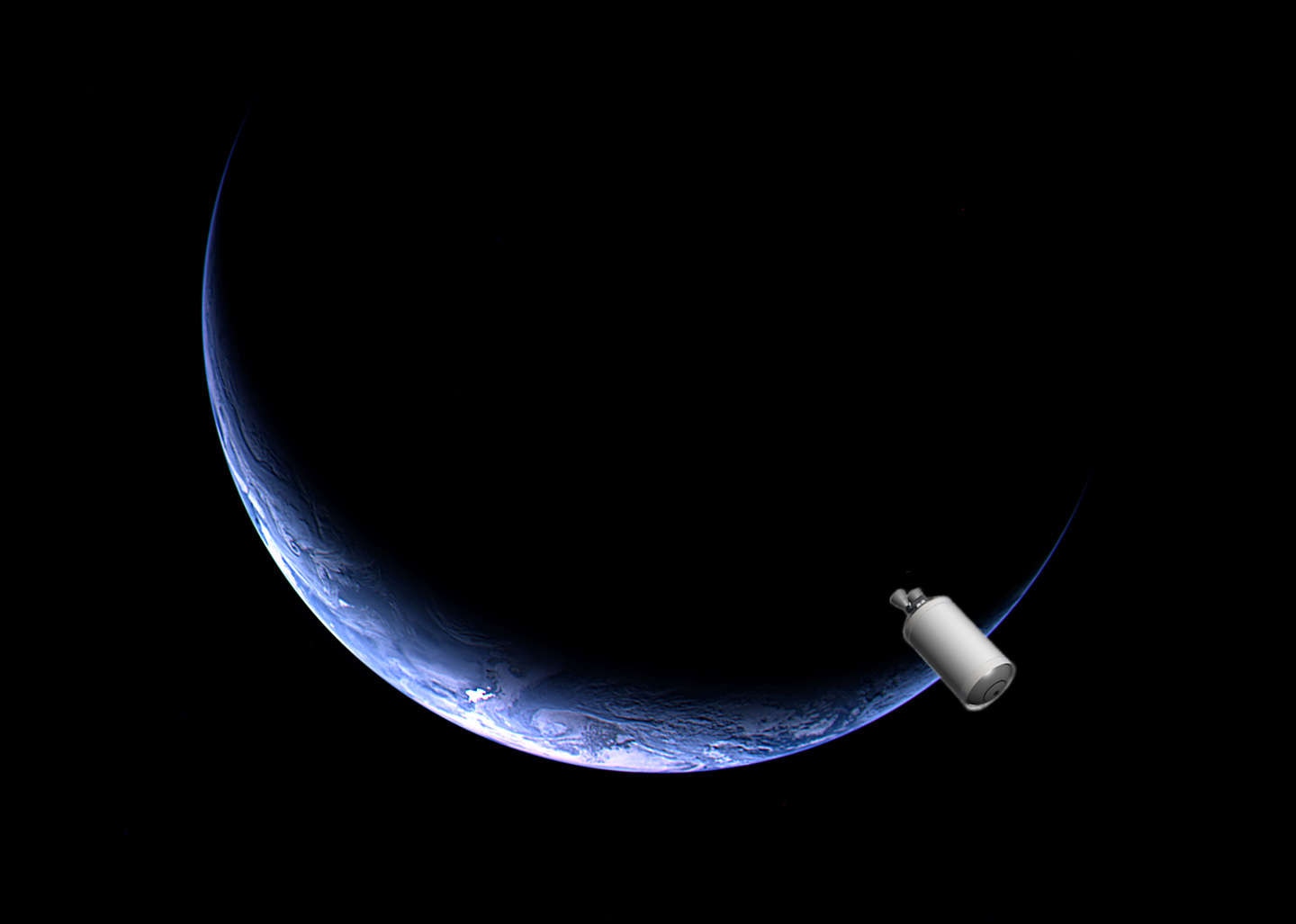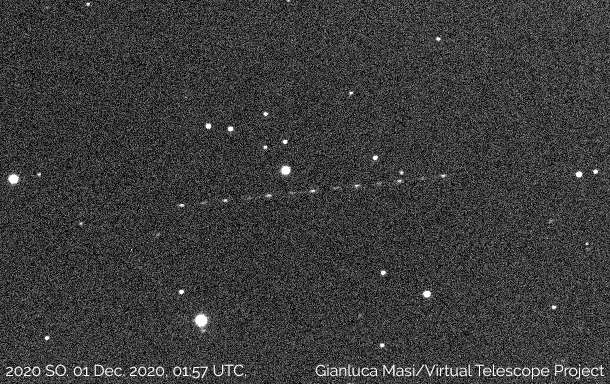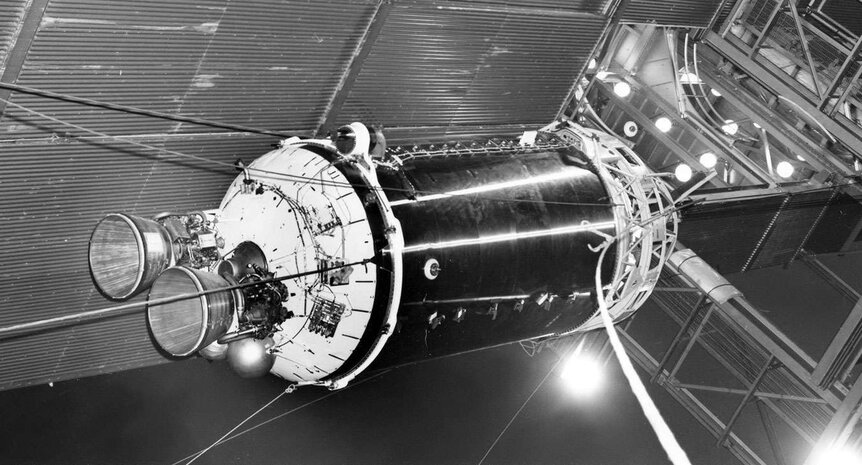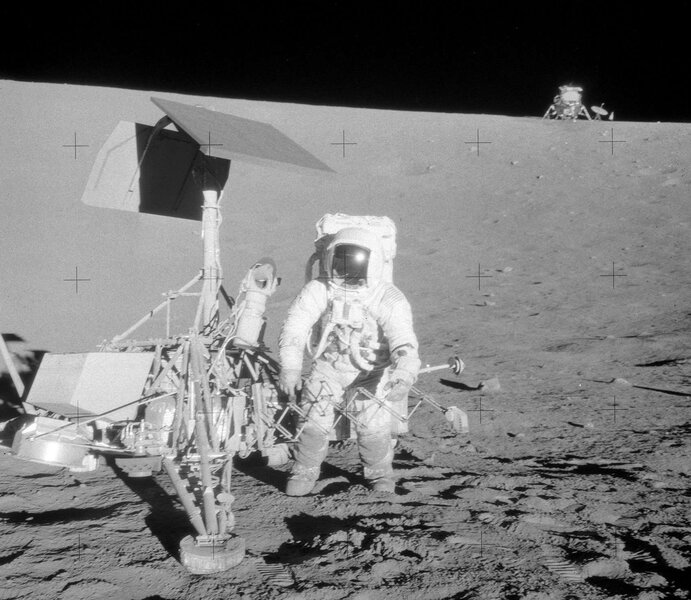Create a free profile to get unlimited access to exclusive videos, sweepstakes, and more!
A near-Earth asteroid passing us in December may actually be an old Moon rocket

Astronomers have discovered a small object in space that will pass by Earth on 1 December 2020 by the small margin of just 50,000 km. Not only that, but our planet's gravity will change its trajectory so much it will become a temporary moon of Earth!
Here's the real kicker: This object is almost certainly not an asteroid. Instead, astronomers think it's actually a spent rocket booster from a robotic Moon mission launched in 1966!
[UPDATE (2 December 2020): After its close pass on 1 December, astronomers have confirmed that 2020 SO is indeed a Centaur upper stage rocket. Using NASA's Infrared Telescope Facility, they observed both 2020 SO and a known Centaur rocket in Earth orbit for comparison. The two spectra matched well enough for them to conclude that 2020 SO is not a natural asteroid but instead the rocket that helped launch Surveyor 2 to the Moon (with unfortunate results; see the text below). Mystery solved!
Also, this object was observed by the Virtual Telescope Project 2.0, and they have images and video:
Nice work!]
The object, called 2020 SO, was discovered in September 2020 by the Pan-STARRS telescope, which surveys the sky looking, in part, for near-Earth objects. It didn't take long to see that the orbit was peculiar… in that it was familiar. The size, shape, and geometry of it are uncannily close to that of Earth's orbit.
That would be very unusual for an asteroid, but that's just what you expect for a rocket booster or space probe. So astronomers traced the orbit backwards, and found something amazing: In September 1966 it was very close to the Earth! If it were an asteroid that means it would have passed us just then, but if it were actually from a space mission then that could've been the launch date.
And, as it happens, there was a spacecraft launched then: Surveyor 2, a mission to land a probe on the Moon.
Aha!
In fact, it gets better. Surveyor 2 launched on 20 September, 1966, using an Atlas-Centaur rocket. The Atlas first stage performed well, and the Centaur upper stage then boosted the spacecraft toward the Moon. However, a midcourse correction made by Surveyor 2 went awry, causing the spacecraft to go into a tumble that could not be recovered. It slammed into the Moon days later at nearly 10,000 kph. Ouch.
But that second stage, the Centaur booster, kept going. It passed the Moon and went into orbit around the Sun.
Could 2020 SO be that Centaur rocket?
It's very likely. The brightness of 2020 SO indicates that it's something like 4–10 meters wide. The Centaur is about 3x13 meters in size, so that fits.
And there's a more subtle reason to think they're one and the same, too. Very careful measurements of the object's orbit shows that it's being strongly affected by the pressure of sunlight. Photons from the Sun hit the object and are reflected away, changing its momentum over time. This force (similar to the YORP effect) slowly changes the orbit of an object, but it's more pronounced for less massive (so, usually smaller) objects. A spent rocket booster is a big hollow tube, so this effect should be strong… just as astronomers have found.
Since 2020 SO's orbit is very much like the Earth's, when one overtakes the other it happens relatively slowly (like two cars on a highway may be moving rapidly, but from one car it looks like the other is passing at a slow pace). In November 2020 it passed into what's called Earth's Hill sphere, the volume of space around Earth where our planet's gravity dominates over the Sun. This volume is about 1.5 million kilometers in radius.
Normally an interplanetary object would pass right through, but 2020 SO is moving slowly enough to be captured by Earth... for a short time. It will take about four months to make a single big loop around us, then on its second pass the gravity of the Moon and Earth will give it just enough energy to escape again, once more becoming a satellite of the Sun.
When it does come close in December astronomers hope to be able to get observations of it that will tell us its composition. That could clinch the case of its origin.
I'll note that has happened before, with old space hardware passing Earth and initially being mistaken for an asteroid. Also, we've had temporary moons as well! The asteroid 2020 CD3 orbited the Earth for a few years before leaving again earlier in 2020. Another asteroid, 2006RH120, orbited the Earth for a few months in 2006/7. Yet another object (just 20 cm across) actually burned up in our atmosphere as a meteor after orbiting the Earth for a while first, too.
These are nicknamed minimoons, though the technical term is temporarily captured objects, or TCOs. It's a quirk of orbital mechanics, but an interesting one. I wonder if, in the not-so-distant future, we can send a space probe to one, since their slow velocity relative to us makes them a juicy target.
... but what a surprise would it be if, like 2020 SO, it turned out to be the spent upper stage of an old space mission instead of an asteroid! That would be cool. Scientists might be disappointed, but I bet there would be very interesting engineering data — for example, erosion from the solar wind, or impacts by micrometeorites — that would have rocket scientists drooling to get their hands on. And if it is an asteroid, well, that wouldn't be so bad either.
So Stay Tuned. In a few weeks we should know a lot more about this enigmatic visitor from space.





























